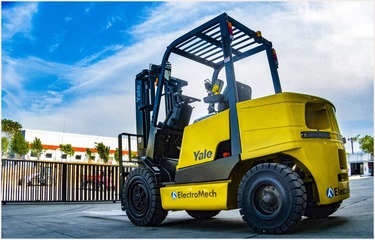
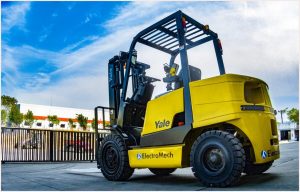
If you’re in the market for a forklift, then understanding where to start can seem like a complex process. Prima facie it may look like just another vehicle, however, it is designed and build around a specific set of rules and regulations. They are used to execute a particular set of jobs and also ensure the safety of the operator and the premises. Buying a forklift is a critical investment and can ensure a large ROI for your business. But a wrong forklift can cost a fortune.
It’s pretty obvious; the best material handling equipment is the one that enables efficient and smooth process flow. It should also be safe, incurs less fatigue on the operators, reduces the production cycle, and brings down the material handling costs. And to ensure you make the right decision, you need to start by asking the right questions and making a detailed checklist of your requirements.
Type of Goods/Applications
Always make sure which kind of material you want to handle with the trucks. Consider the height, weight, and size of the material as these parameters determine which type of truck to go for. Also, consider the pallet’s dimensions, check whether they all are of the same size or is there a variation in their sizes. Bulky pallets also play a critical role in determining the type of truck. The rating plate of the truck provides you with the information required for a truck’s capacity and load centres.
Stacking or Racking
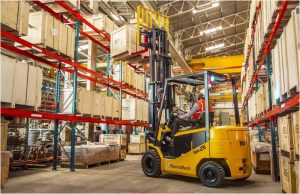
Analyse whether the goods can be stacked on top of each other along with the pallets, or you have to move them horizontally from one place to another. For racking, measure the height as well as the depth of the racks and shelves. This will help you gauge how the highest level at which the truck needs to scale.
Storage Area
Analyse the type of storage, the size, temperatures etc. Check how the goods need to be distributed throughout the warehouse, is it first-in, first-out (FIFO) or last-in, first-out (LIFO). Understanding the system or the process of distribution is of paramount importance when buying a truck.
Warehouse Design
Note whether the operations are going to take place indoors or outdoors. If it’s going to be outdoor, you need to select a truck that is fit to work in all kinds of weather conditions. Next on the agenda comes the design of the warehouse like the ceilings, doors, and aisle structure etc.
Measure the length and width of the aisles. It is essential to understand the condition and material used for the flooring. Check the aisles for corners, slopes, and smoothness.
Ceilings & Doors
This is to check how high can the mast scale inside the warehouse. This is also to ensure that the other components, which are located just below the ceiling, such as the sprinklers and pipes, do not get affected because of the trucks. Always the lowest point of the ceiling height into consideration.
Check how high and wide are the warehouse doors, as you do not want your truck to get stuck at the doors. Measure them in such a way that the trucks easily pass through without damaging the warehouse infrastructure.
Container Loading and Ramps
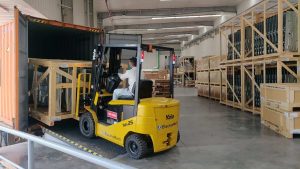
Loading and unloading a shipping container always poses a material handling challenge essentially due to constraints inside the container. Uneven ramp and low ground clearance of the forklift form the most critical factors and needs to be considered. Forklifts come with different configurations for various application challenges. One such configuration comes with a ‘full free lift mast’ that makes loading, unloading, and lifting materials inside the container easier and safe.
Maintenance
Every equipment requires maintenance at regular intervals. While maintenance prolongs the useful life of your machine and decreases the number of breakdowns but all these comes at a slight premium. Inquire with the dealer about the after-sales maintenance contracts and what all will be covered within their services. Check how quickly do they respond to emergency breakdowns and repairs. If you partner with a trusted brand, you’ll find that they also maintain a healthy inventory of OEMs.
Customized Attachments
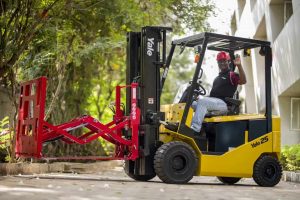
Customized forklift attachments allows the forklifts to lift, push, pull, rotate, clamp, and hold with better efficiency. Forklift attachments come in different range of shapes and sizes and most of them can be customized to suit your requirements, workplace, and truck. Each forklift attachment comes with its own unique set of benefits and considerations that needs to be taken care of before deciding which forklift attachment suits your requirement the best. Every attachment enhances productivity, flexibility, and safety.
Now that you have a checklist on what to look for while buying a truck. Please fill the form below with your requirements or click on the link to know more about our wide range of material handling equipment.


